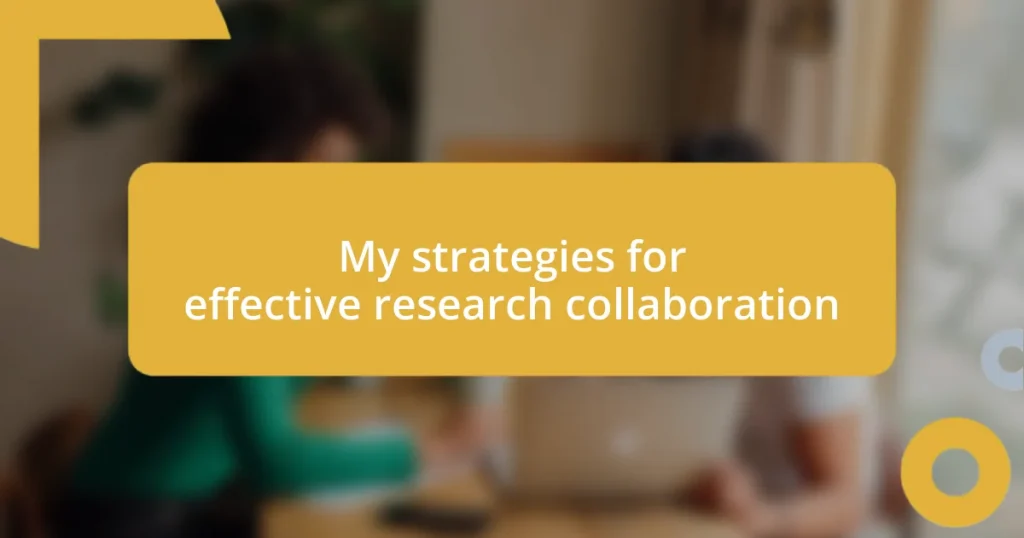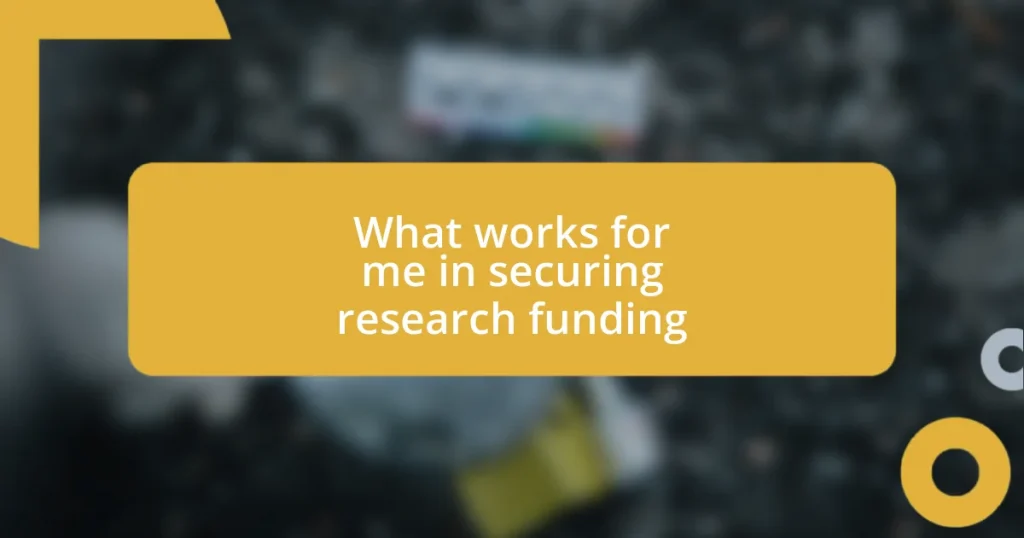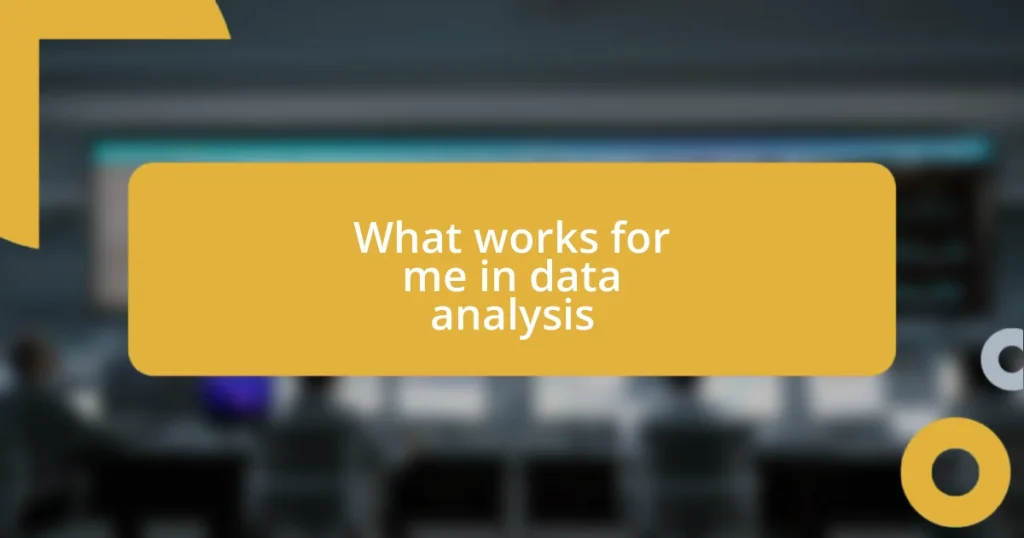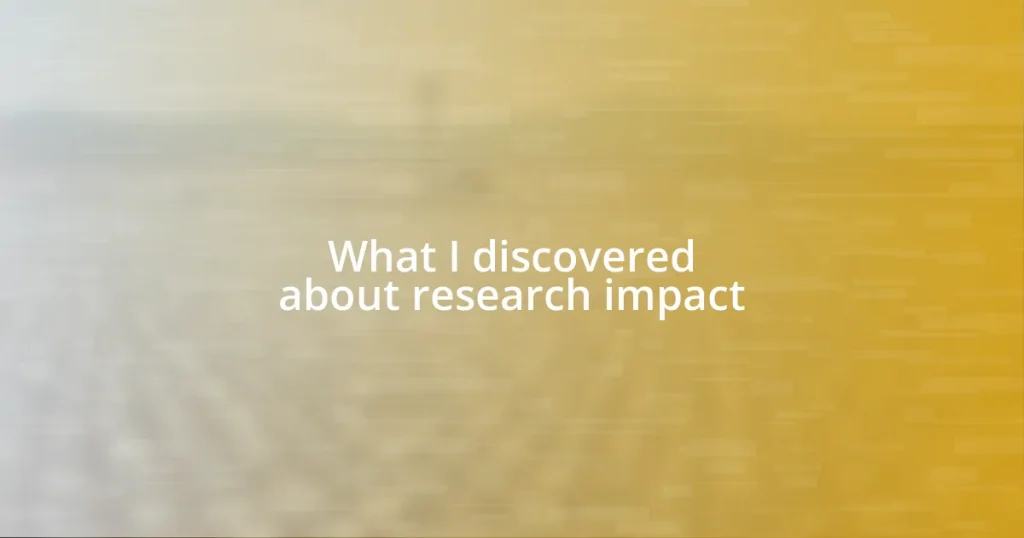Key takeaways:
- Research collaboration enhances the quality and depth of work through diverse perspectives and emotional support among team members.
- Effective communication, clear goals, and the use of technology are essential for successful collaboration, fostering alignment and efficiency.
- Evaluating collaboration outcomes and involving external feedback can guide improvements, recognize team efforts, and ensure research impacts the community positively.
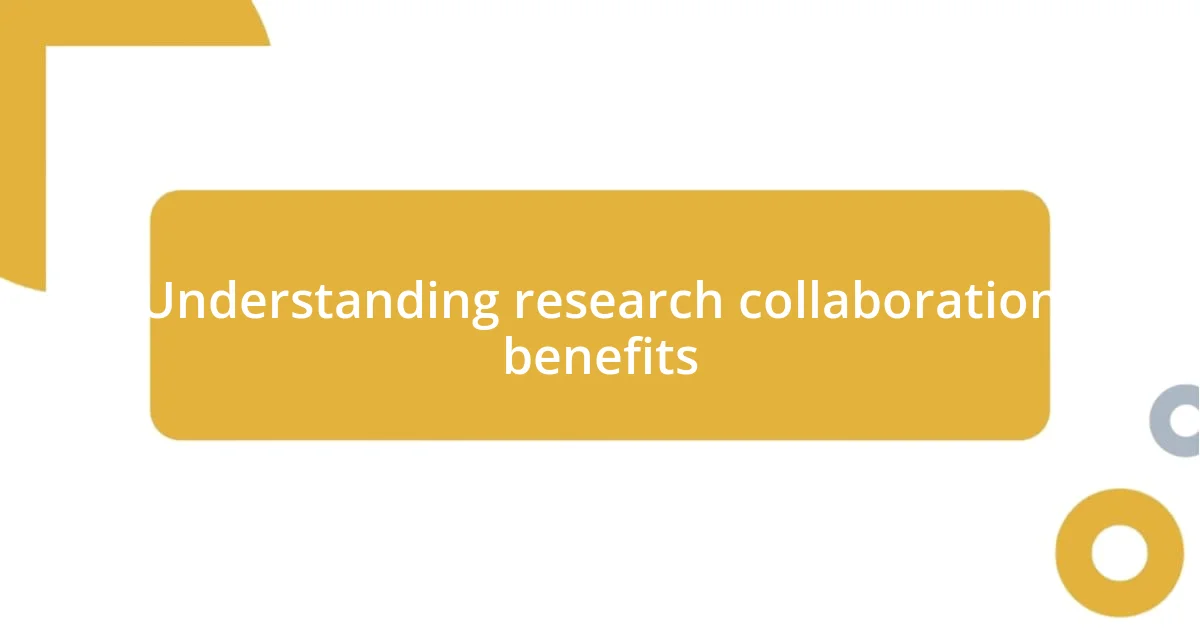
Understanding research collaboration benefits
Research collaboration opens a treasure trove of advantages that can amplify the impact of our work. I remember when I teamed up with a group of researchers from different disciplines. The synergy we created not only broadened our perspectives but also led to insights we never would have achieved alone. Isn’t it fascinating how diverse minds can bring about innovative solutions?
Moreover, collaborating can significantly enhance the quality of our research. In my experience, having multiple sets of eyes on data analysis not only catch errors but also sparks deeper discussions about interpretations. Have you ever felt that rush when a teammate poses a question that completely shifts your understanding? Those moments of revelation are what make research truly exhilarating.
Then there’s the support network that effective collaboration fosters. During challenging times in a project, I’ve found that sharing the workload with trusted colleagues provides emotional resilience. When we uplift each other, aren’t we more equipped to face setbacks together? The camaraderie born from collaboration often transforms mere colleagues into lifelong friends.
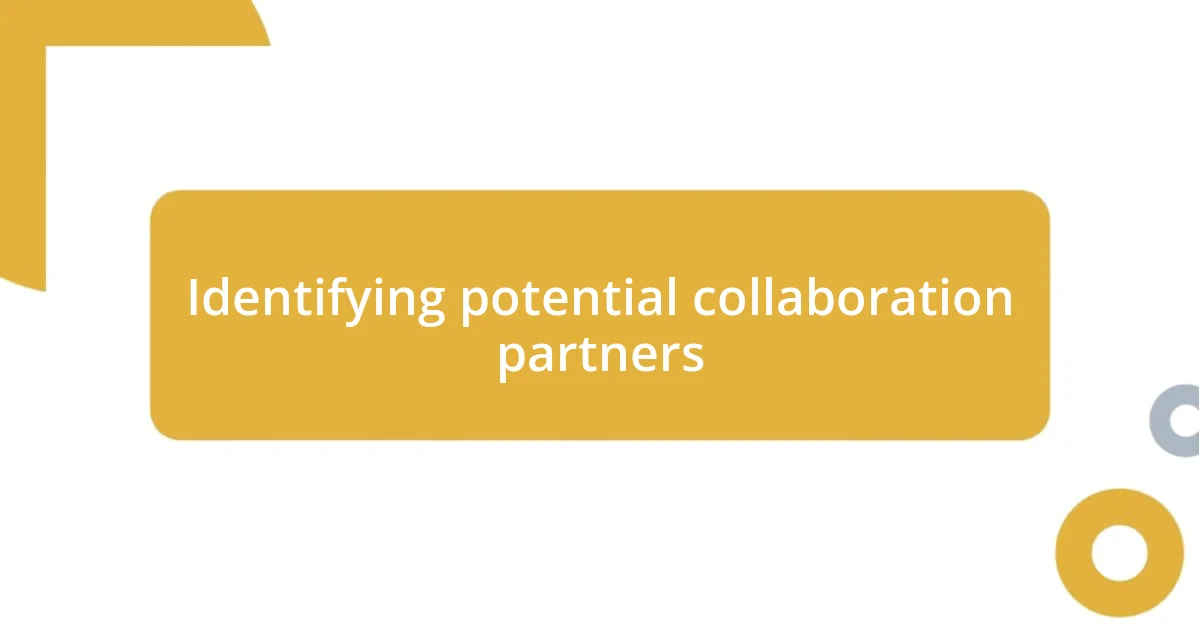
Identifying potential collaboration partners
Identifying potential collaboration partners is essential to leverage diverse expertise effectively. I’ve often found that reaching out to professional networks, whether through conferences or online platforms, can unveil a rich pool of candidates. For instance, when I was searching for a partner for a specific project, a simple LinkedIn search led me to a researcher whose work perfectly matched my interests. Isn’t it amazing how just a few clicks can connect us with individuals who share our passions?
Additionally, tapping into academic databases and research publications can reveal individuals consistently contributing to similar topics. An experience I had involved reviewing the work of various authors for a literature review, which allowed me to spot collaboration opportunities. I discovered someone whose research complemented mine, ultimately leading to a co-authored paper. Have you ever stumbled on a gem of a connection while digging through academic resources?
Lastly, consider engaging with your existing network for recommendations. Trust and mutual respect can play a crucial role in collaboration. I recall a time when a colleague suggested a fellow researcher who not only had the right expertise but also shared our values. That recommendation paved the way for a rewarding partnership. It underscores how vital interpersonal connections are in finding the right collaborators.
| Method | Description |
|---|---|
| Professional Networks | Utilizing platforms to connect with potential partners. |
| Research Publications | Identifying authors with overlapping interests. |
| Network Recommendations | Seeking trusted suggestions from colleagues. |
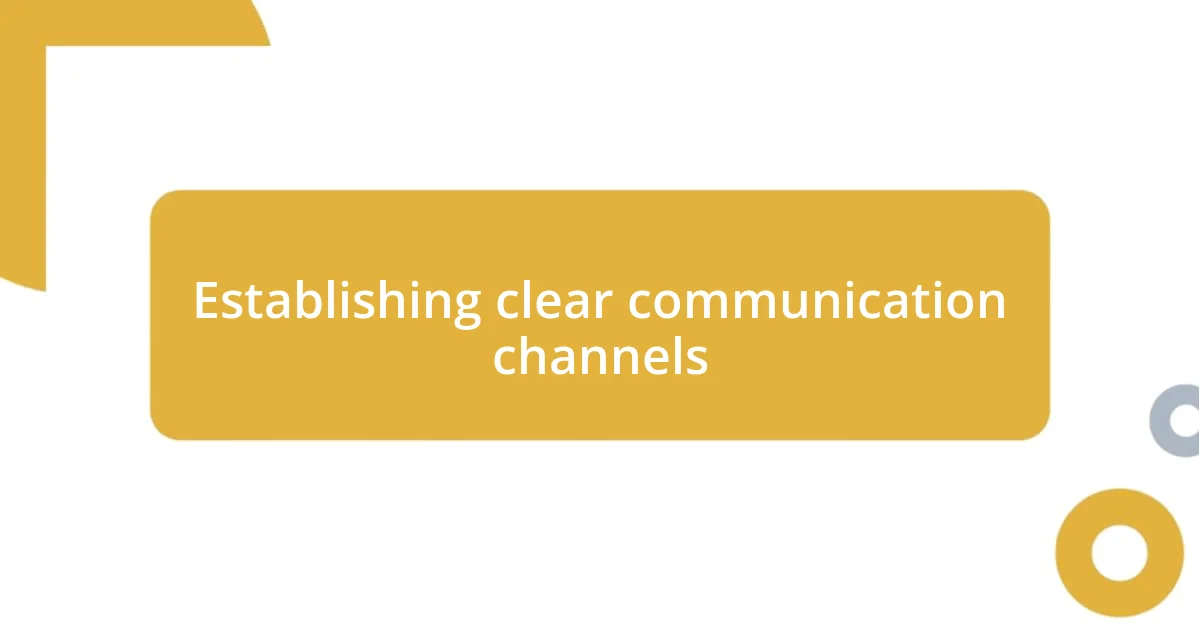
Establishing clear communication channels
Establishing clear communication channels is crucial for successful research collaboration. I’ve learned the hard way that misunderstandings can derail a project. In one instance, a miscommunication about deadlines led to a scramble at the last minute, which is never a pleasant experience. Implementing structured communication methods, like regular meetings or collaborative tools, can ensure everyone is on the same page.
To facilitate effective communication, consider these strategies:
– Regular Check-ins: Schedule weekly updates to discuss progress and address any obstacles.
– Collaboration Tools: Use platforms like Slack or Trello for real-time communication and task tracking.
– Clear Documentation: Keep shared documents organized with clear notes, so everyone can refer back and not rely on memory alone.
– Open Feedback Channels: Encourage an environment where team members feel comfortable sharing thoughts and ideas without fear of judgment.
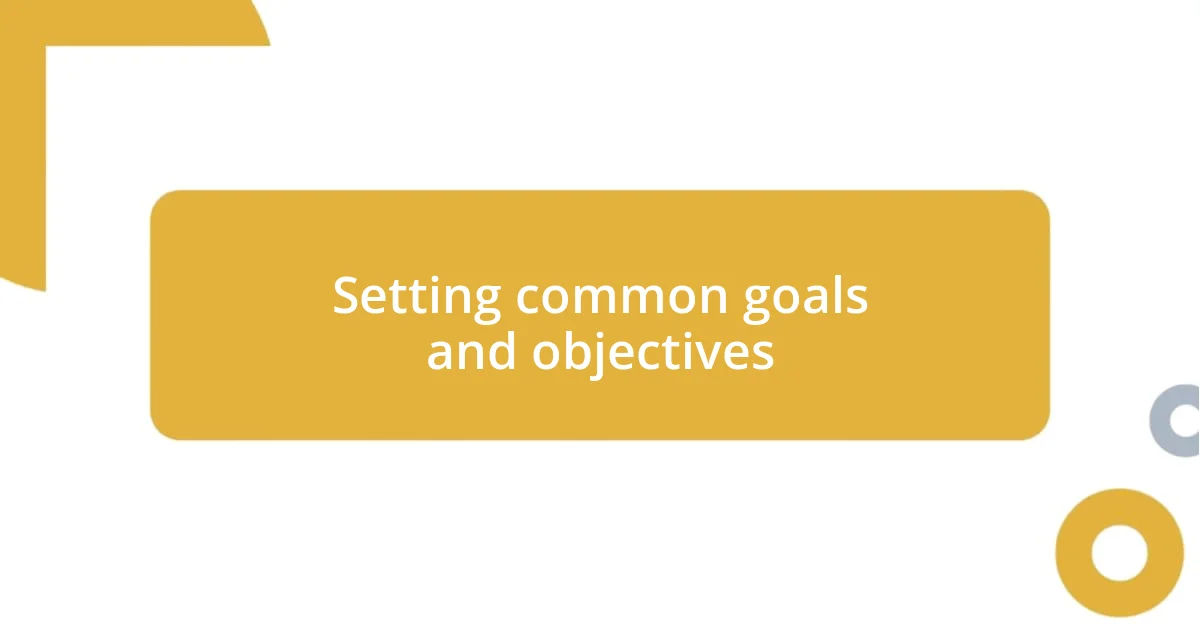
Setting common goals and objectives
Setting common goals and objectives is the heartbeat of effective collaboration. I recall a project where my team gathered to outline our objectives; it was enlightening to see everyone’s perspectives come together. This act not only aligned our research focus but also ignited a sense of shared purpose. Who doesn’t thrive when they know everyone is rowing in the same direction?
In another instance, I learned that breaking down these goals into smaller, measurable tasks can make the process less daunting. It’s easy to overwhelm ourselves with the bigger picture, but chunking it down helped my team stay motivated. I often ask myself, what steps can we take today to move closer to our end goal? This reflection has guided many successful collaborations.
Lastly, I believe that revisiting these goals periodically is essential. During one collaboration, we set a date to reassess our progress, which allowed us to pivot when needed. It’s like checking your compass; are we still heading in the right direction? This flexible approach not only kept us aligned but also fostered a culture of transparency within the team. Establishing and revising these objectives can truly enhance the research journey.
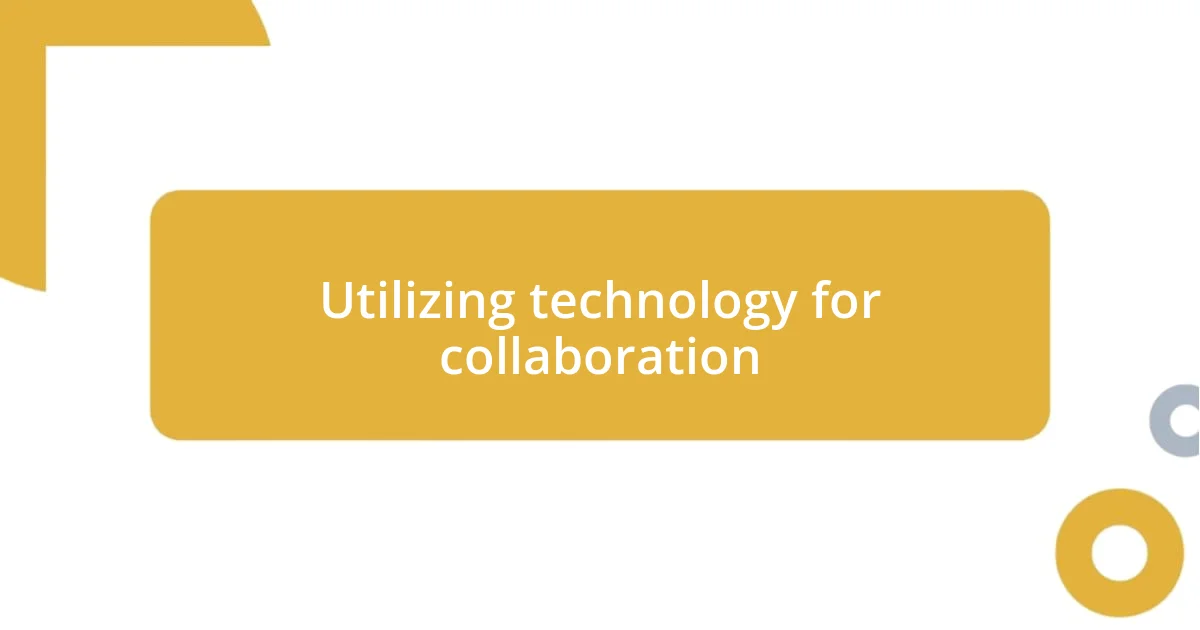
Utilizing technology for collaboration
Utilizing technology effectively in research collaboration can be a game changer. I remember my first experience with cloud storage—it felt like opening a door to a new world. No more frantic emails chasing down files! Instead, we could all access important documents in real-time. It sparked a sense of freedom and efficiency that transformed the way my team worked together. Have you ever felt that rush when everything flows effortlessly?
Tools like video conferencing apps also bring a personal touch to remote collaboration. I once joined a project while traveling, and using Zoom helped bridge the distance. Seeing my colleagues’ faces and hearing their laughter in virtual meetings reminded me that we were all in it together, no matter where we were. Isn’t it fascinating how technology can create connections that transcends physical boundaries?
Moreover, leveraging data analysis tools can enhance the quality of research. In one project, utilizing software like Tableau helped visualize our data in ways I never thought possible. Suddenly, patterns emerged that we hadn’t noticed before. It made me think, how often do we overlook valuable insights simply because we’re not using the right tools? Embracing technology not only streamlines our work but also enriches the research outcomes, making collaboration truly meaningful.
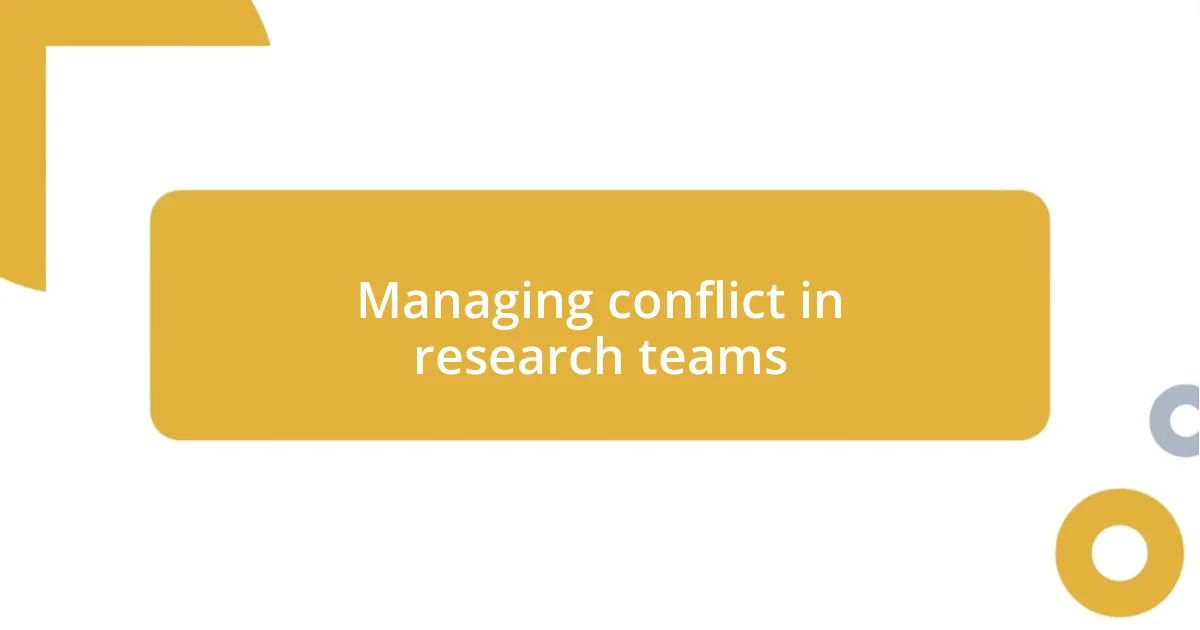
Managing conflict in research teams
When conflicts arise in research teams, I’ve found that addressing them head-on often leads to the most constructive outcomes. I remember a time when a disagreement over methodology threatened to derail our progress. Instead of ignoring the tension, we held an open discussion where every voice was heard. It’s remarkable how simply acknowledging the conflict can shift the atmosphere from adversarial to collaborative. Don’t you think it’s essential to create a space where team members feel safe to express their concerns?
I also advocate for establishing ground rules for dealing with conflict early on in the project. In one of my teams, we agreed that any disagreement would be addressed within 48 hours. This approach kept issues from festering and ensured we maintained a focus on our research goals. I often wonder how many teams struggle because they lack this proactive strategy. Do you find that timely discussions can make a significant difference?
Perhaps the most eye-opening experience I’ve had was witnessing the resolution of a conflict through mediation. A colleague stepped in to facilitate a discussion between two team members who were at odds. Watching them articulate their perspectives and come to a mutual understanding not only resolved the immediate issue, but it also strengthened our team bond. It made me realize that sometimes, a neutral party can illuminate solutions we might overlook when emotions run high. Have you considered how valuable mediation can be in fostering harmony in a group?
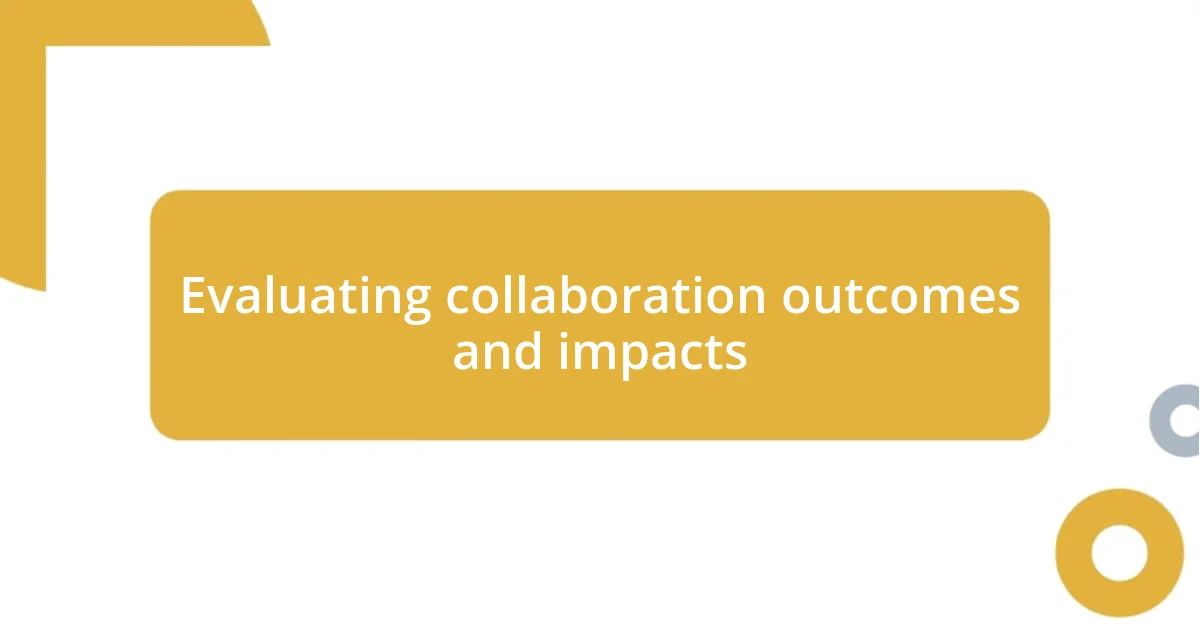
Evaluating collaboration outcomes and impacts
Evaluating the outcomes of collaboration is critical for understanding its effectiveness. I recall a project where we implemented a feedback loop after each phase, allowing us to reflect on what worked and what didn’t. This practice not only helped us track progress but also fostered an environment of continuous improvement. Have you ever engaged in a similar evaluation process? It really makes a difference!
Consider the impact on team dynamics when outcomes are assessed transparently. In one project, we created a shared document detailing our goals and the metrics for success. As we made progress, we’d celebrate small wins collectively. I believe that recognizing our achievements helped boost morale and solidified a sense of unity. Don’t you agree that acknowledging effort is just as important as evaluating results?
On a broader scale, the implications of collaborative outcomes extend beyond the team. During a project that was closely tied to community needs, we developed a strategy to gather external feedback on our results. The insights we received were eye-opening. It made me ponder—how often do we overlook the perspectives of those who benefit from our research? This practice not only refined our approach but also ensured that our work had a tangible impact, reinforcing the idea that research is a dialogue with the community.










